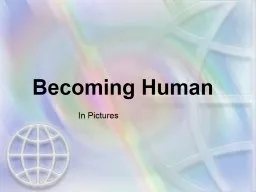PPT-Becoming Human In Pictures
Author : sophie | Published Date : 2022-06-14
A girl looks through the replica of a neanderthal skull displayed in the new Neanderthal Museum in the northern town of Krapina February 25 2010 The hightech
Presentation Embed Code
Download Presentation
Download Presentation The PPT/PDF document "Becoming Human In Pictures" is the property of its rightful owner. Permission is granted to download and print the materials on this website for personal, non-commercial use only, and to display it on your personal computer provided you do not modify the materials and that you retain all copyright notices contained in the materials. By downloading content from our website, you accept the terms of this agreement.
Becoming Human In Pictures: Transcript
Download Rules Of Document
"Becoming Human In Pictures"The content belongs to its owner. You may download and print it for personal use, without modification, and keep all copyright notices. By downloading, you agree to these terms.
Related Documents














